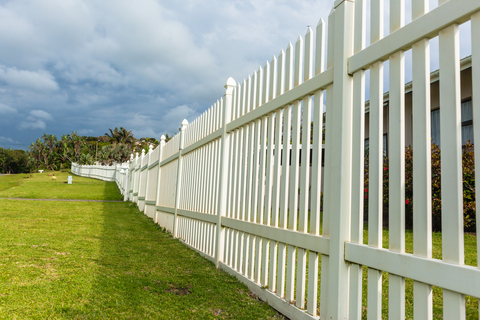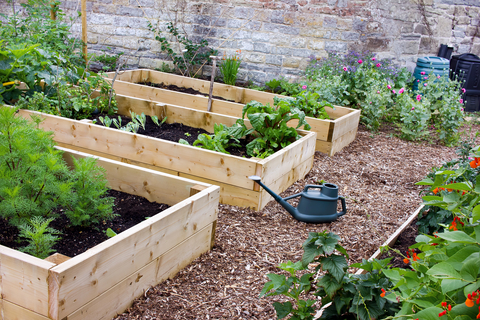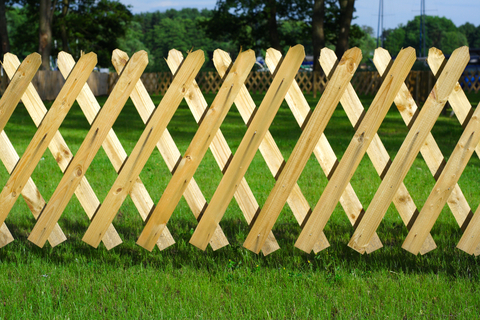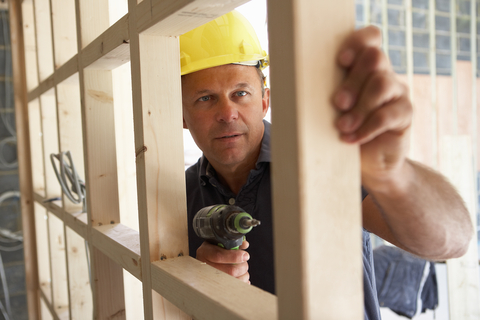What is the Maximum Fence Height in the UK?
Published on 20 February 2025

For homeowners, landscapers, builders, and property developers across the UK, understanding fence height regulations is crucial for both maintaining privacy and ensuring legal compliance. This is generally to answer plausible questions such as ‘how high can a fence be?’, ‘the maximum height of a fence’, ‘garden fence height rules’ and so on.
Installing a fence that exceeds the permitted height can result in enforcement action from local councils, potentially leading to fines and the requirement to modify or remove your fence.
This comprehensive guide will walk you through everything you need to know about maximum fence heights in the UK, including when planning permission is required and practical solutions for increasing privacy without breaking regulations.

General UK Fence Height Regulations
The UK has clear guidelines on fence heights that apply to residential properties:
Back Garden Fence Height
The standard legal limit for fences, walls, and gates in your back garden is 2 metres (6.56 feet) without planning permission. This measurement is taken from the ground level on which the fence stands.
Front Garden Fence Height
For fences adjacent to a highway or footpath used by vehicles (typically front garden boundaries), the maximum height permitted without planning permission is just 1 metre (3.28 feet).
These regulations apply to all boundary structures, including brick walls, wooden fences, metal railings, and gates.
When is Planning Permission Required?
You will need to obtain planning permission from your local authority if:
- Your fence will exceed 2 metres (6.56 feet) in height anywhere on your property
- Your front garden fence will be over 1 metre (3.28 feet) and is adjacent to a road or footpath
- Your property is located within a conservation area
- Your property is a listed building or adjacent to a listed building
- You’re adding a trellis or lattice that would extend the total height beyond the permitted limits
Before installing any fence that might exceed these limits, it’s advisable to check with your local planning authority. Applications typically require detailed plans, photographs of the site, and the appropriate fee.
Common Questions About Fence Height
- Can I build a 7ft or 8ft fence?
No, not without planning permission. Standard UK regulations restrict fence height to 2 metres (approximately 6.5ft) without permission. However, if you need additional privacy, consider these alternative options: Apply for planning permission (success depends on your local area and specific circumstances) Install trellises that keep the total height under 2 metres. Plant natural hedging (which isn’t subject to the same height restrictions)
- Can I put a fence up without my neighbour’s permission?
Yes, you can erect a fence on your own property without your neighbour’s permission, provided it complies with the legal height limits. However, if the fence is on a shared boundary, it’s both courteous and practical to discuss your plans with your neighbour first.
- Can my neighbour hang things on my fence?
No, if the fence belongs to you (is entirely on your property), your neighbour should not hang items on it without your permission. Fences on the boundary typically belong to the property owner who installed them, and attaching items could potentially damage your fence.
- How close can I build to my neighbour’s fence?
You can build right up to your property boundary. However, if you’re unsure where the exact boundary lies, it’s best to check your property deeds or consult with your neighbour to avoid disputes.
Ways to Increase Privacy Without Breaking the Law
If you’re concerned about privacy but don’t want to pursue planning permission, consider these legal alternatives:
1. Trellis Panels
Trellis panels are lightweight, latticed wooden frameworks typically made from thin strips of wood crossed and joined together to form a diamond or square pattern. These decorative structures can be attached to the top of an existing fence to add height while allowing light to filter through. The open design of trellis panels makes them less imposing than solid fencing while still providing a degree of screening when climbing plants are added.
2. Strategic Planting
Strategic planting involves using trees, shrubs, and hedges as natural privacy screens along or near your boundary. Unlike man-made structures, these living barriers can grow well beyond the 2-metre height restriction without requiring planning permission. Popular choices include fast-growing evergreen species like Leylandii, Laurel, or Bamboo that provide year-round screening, or deciduous options that offer seasonal variation in density and appearance.
3. Subtle Ground Level Adjustments
Ground-level adjustments involve creating raised beds or slightly elevated areas where your fence will stand, effectively increasing the overall height of your boundary without extending the fence itself beyond legal limits. This might include building a small retaining wall and adding soil to raise the ground level by several inches, or creating a landscaped berm (a gently sloping mound of earth) along your boundary line prior to fence installation.
4. Decorative Screens
Decorative screens are freestanding, often portable panels that create privacy zones within your garden rather than at the boundary. These can be made from various materials including wood, metal, or synthetic materials, and come in many designs from solid panels to slatted or patterned options. Because they’re not permanently fixed and don’t serve as boundary markers, they typically fall outside fence height regulations, allowing for greater flexibility in height and positioning.
Good Neighbourly Practices When Installing a Fence
To maintain positive relationships with those living around you:
- Inform neighbours before building or modifying a fence, especially if it’s on a shared boundary
- Consider the impact of your fence on their garden in terms of shade and wind resistance
- Maintain your fence regularly to keep it in good condition
- Establish a clear understanding of boundary ownership and responsibility for fence upkeep
Understanding the maximum fence height regulations in the UK is essential for any homeowner or property developer. While the standard limits are 2 metres for back gardens and 1 metre for front gardens adjacent to highways, there are various ways to increase privacy while remaining compliant with regulations.
Before installing any fence, always check with your local planning authority if you have any doubts about the permitted height in your specific area, as regulations can sometimes vary in conservation areas or for listed buildings.

Find the Perfect Fencing Solution with Linnell Bros
Looking to install a fence that meets UK fence height regulations while enhancing privacy and security? At Linnell Bros, we offer a wide range of high-quality fence panels, fence posts, trellises, and garden fencing to suit every property’s needs.
Whether you’re a homeowner, landscaper, builder, or property developer, our durable and stylish fencing materials will help you create the perfect boundary.
Explore our fencing supplies today and get expert advice on the best options for your project!
Contact us now or visit our website to find everything you need for your fencing project.





